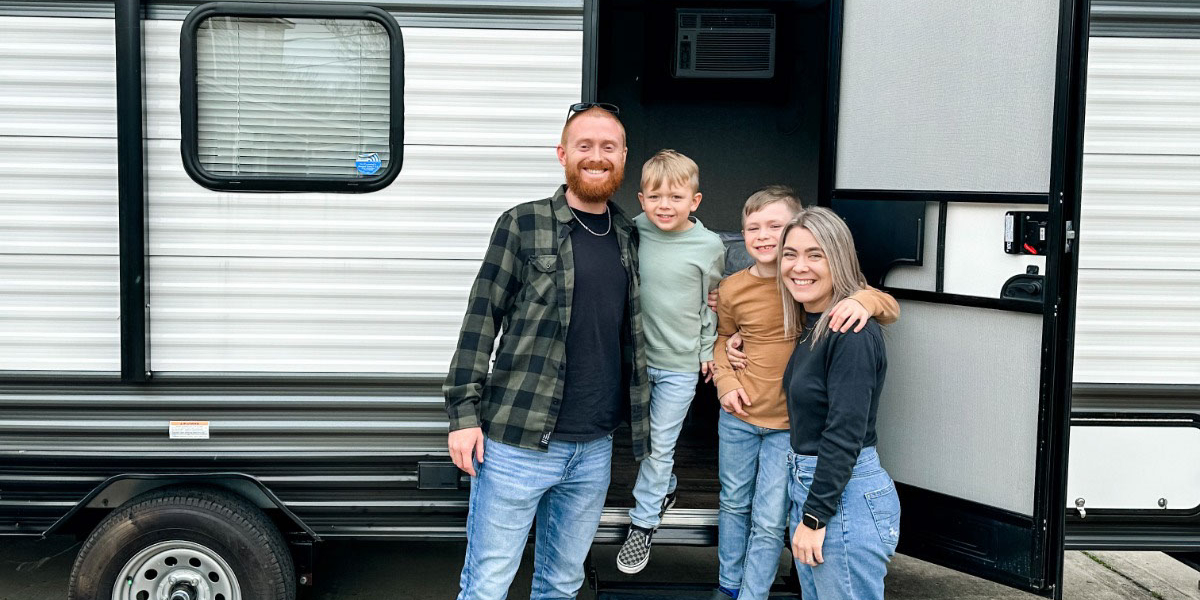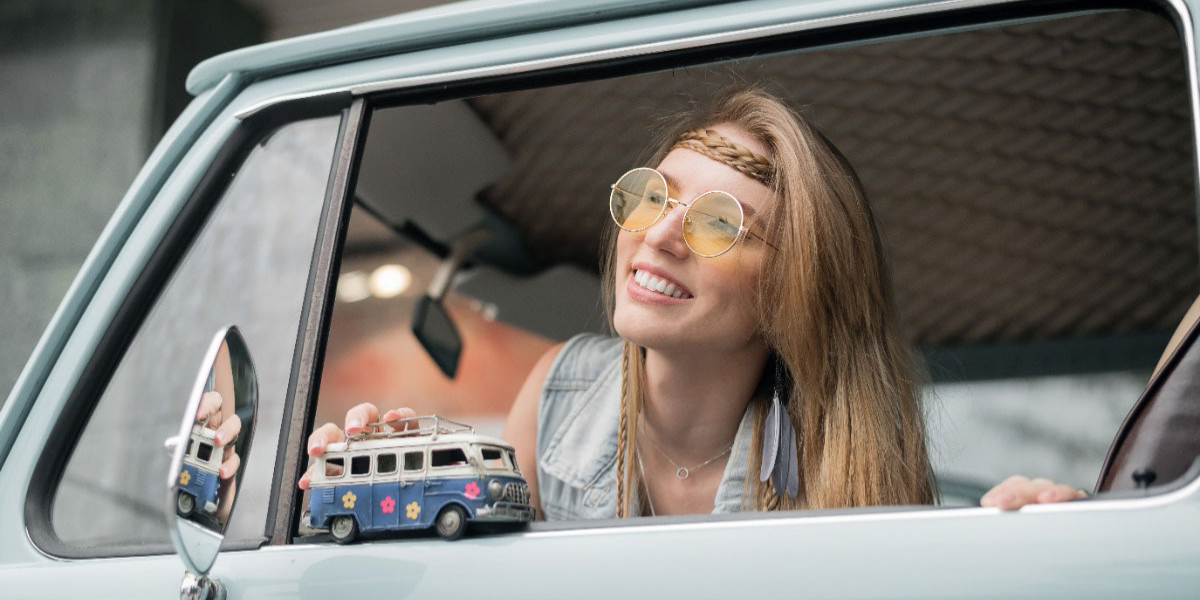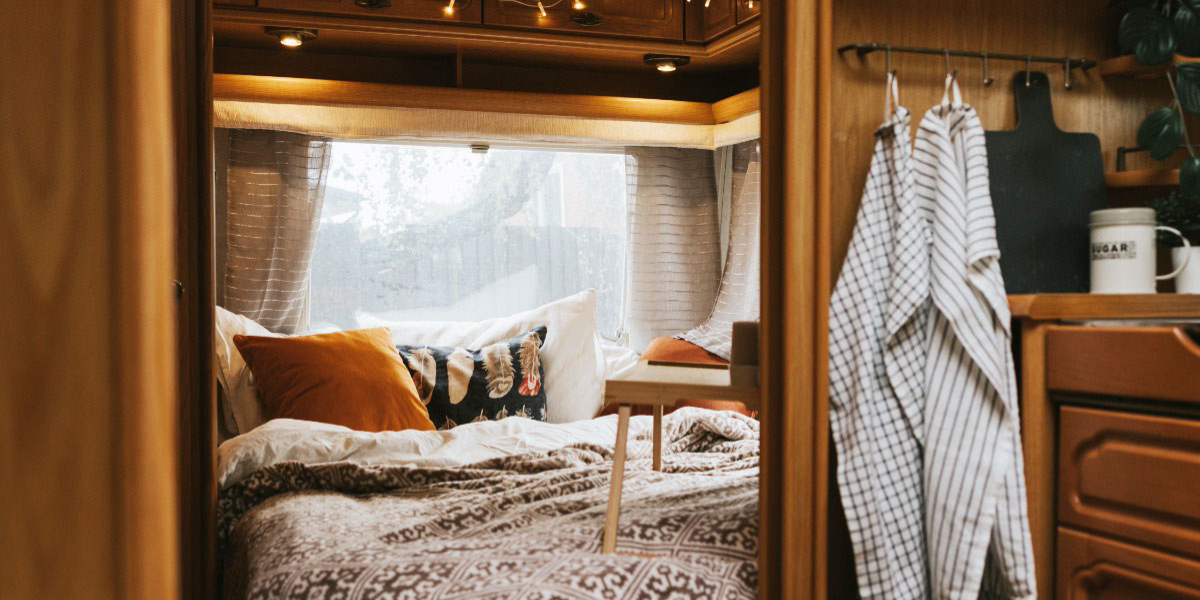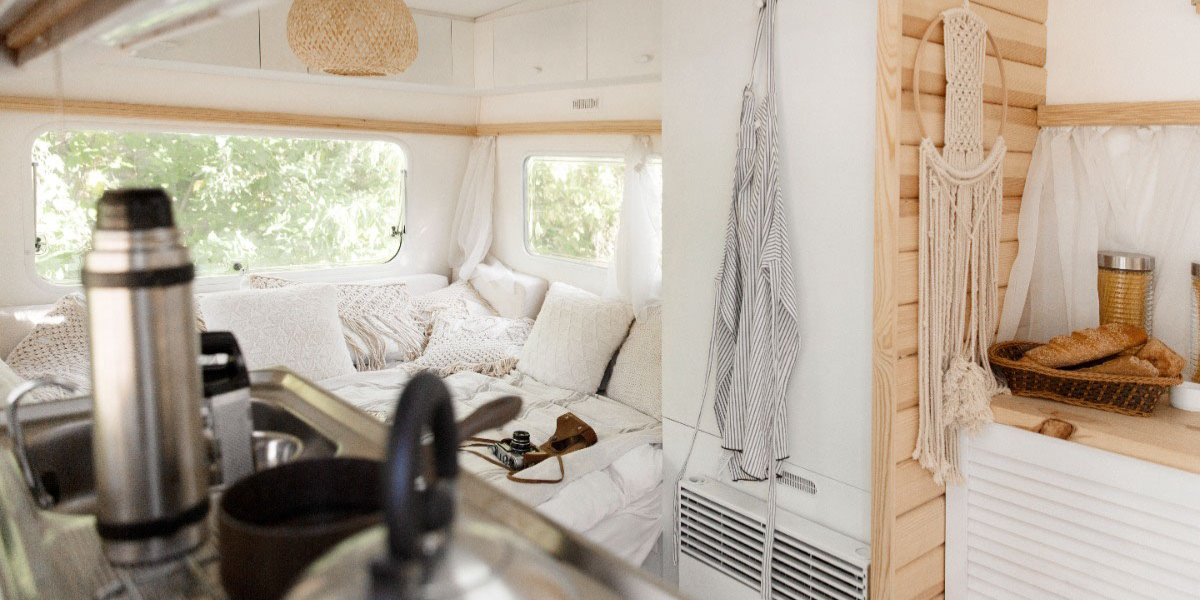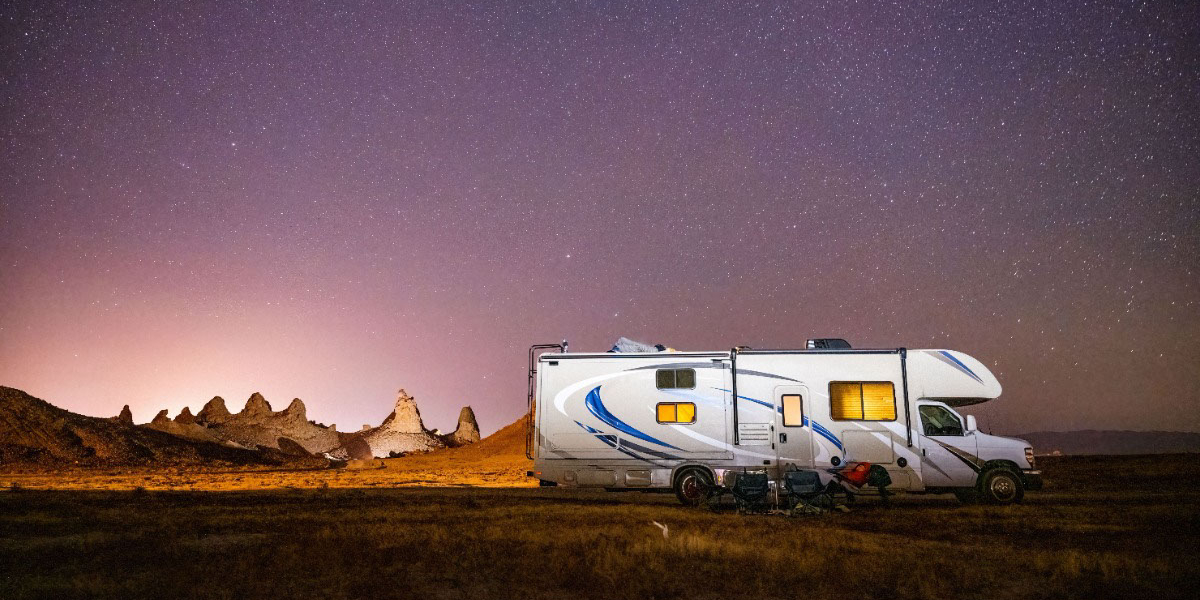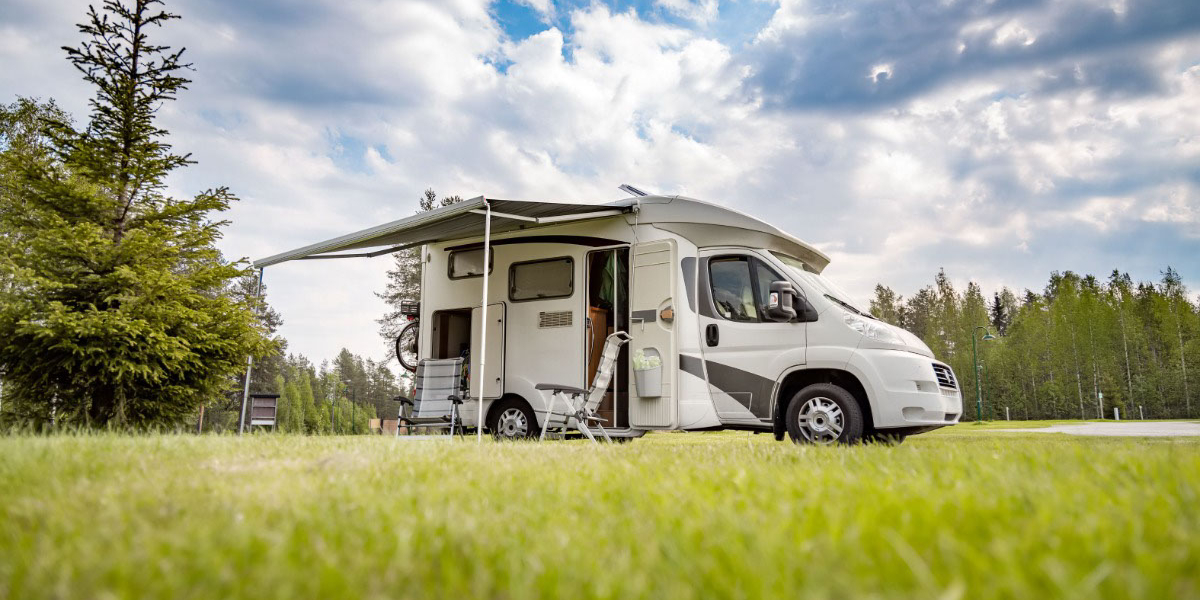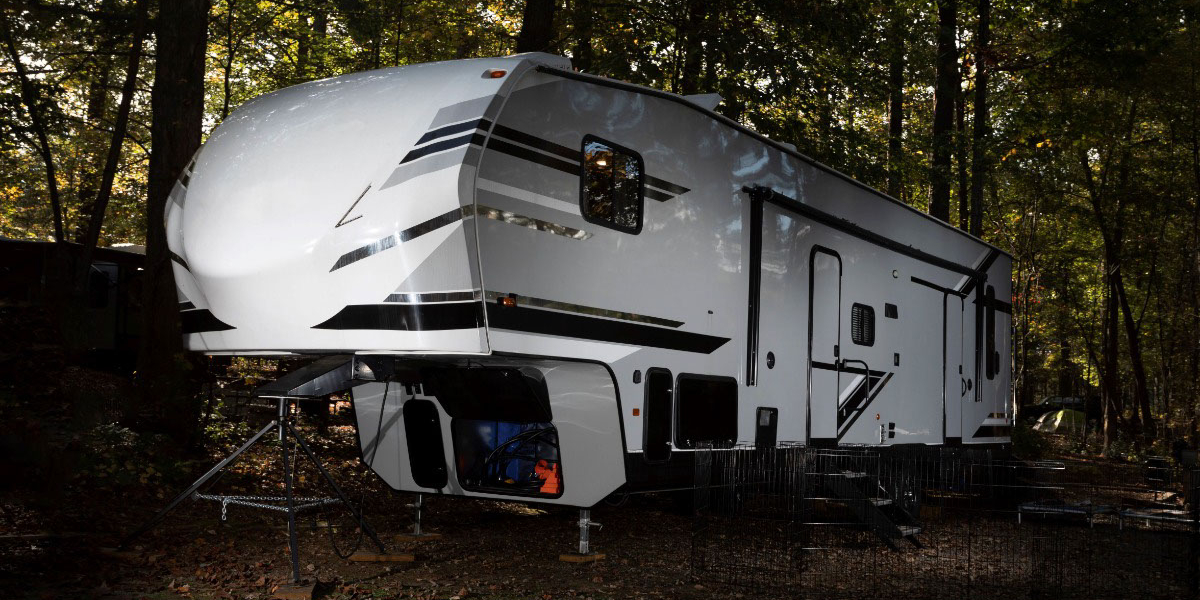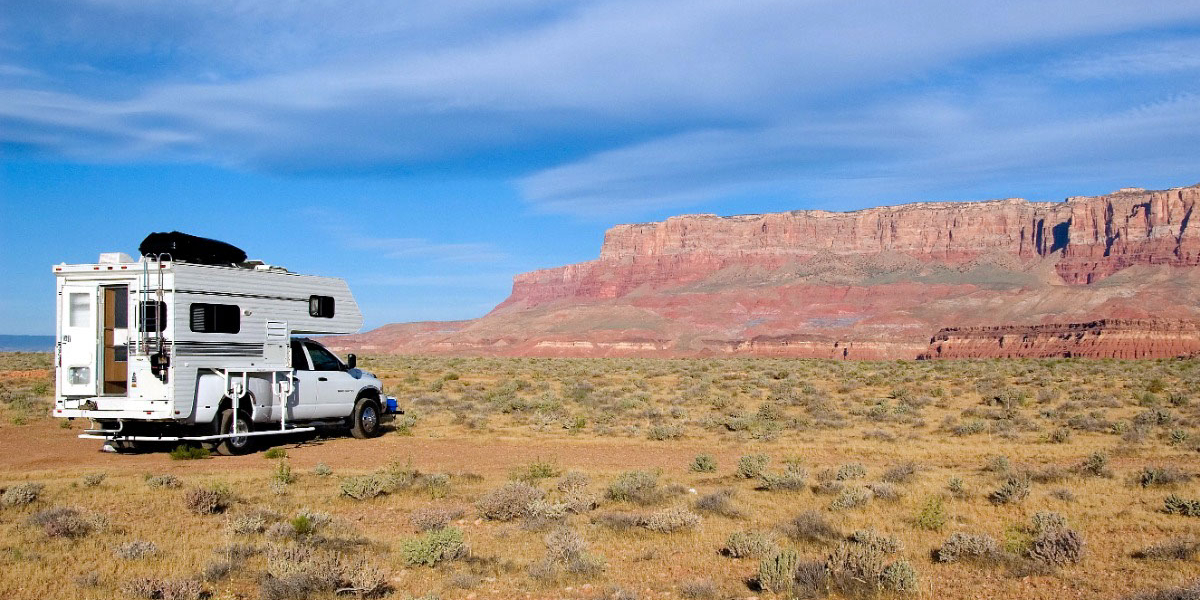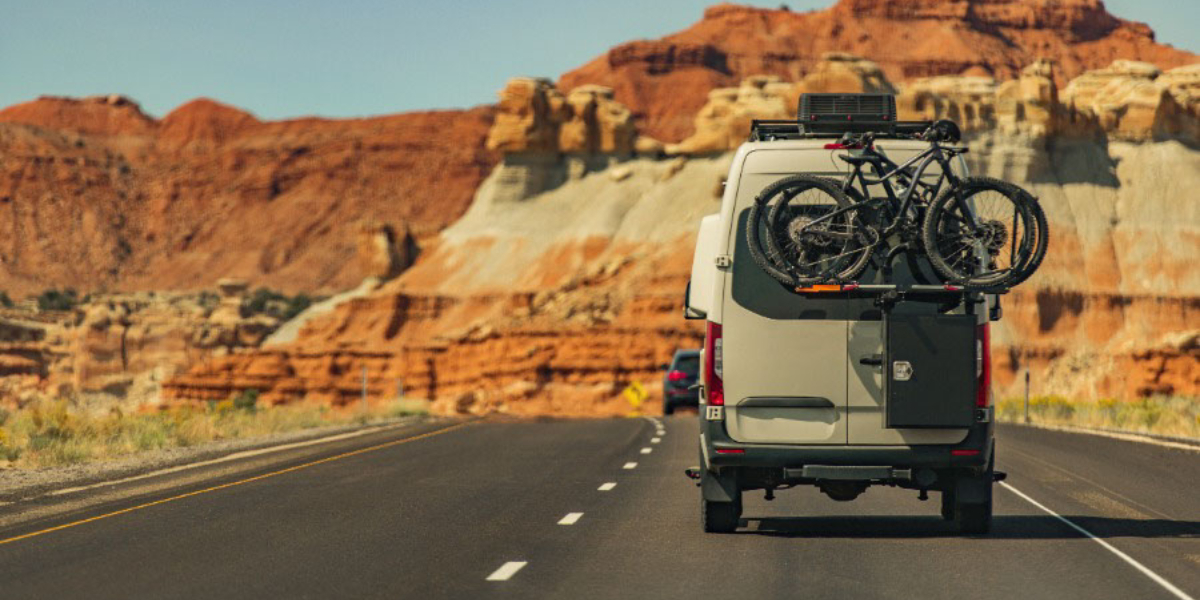When it comes to renovating an RV, it can be helpful to seek guidance from a fellow RVer who’s currently in the midst of renovating their own motorhome. Speaking to a seasoned member of the RV community can give you invaluable insight into the renovation process, along with tips and tricks they learned during their own experience.
RV Trader had the chance to speak to AJ Harless, a Trader Interactive team member who’s currently renovating a travel trailer with his wife. He gave us the low down on which projects he’s already tackled, currently working on, and planning to complete in the future. He also provided us with some amazing insider knowledge and advice that can benefit both beginners and those who are more experienced with renovations. If you want to get some fun project ideas or hear a firsthand account of the RV renovation process, check out our interview with AJ below!
1. What type of RV are you renovating?
We are renovating a 2021 Coleman Lantern 17B. It’s a relatively affordable, entry-level travel trailer that is great for first-time buyers. It has pretty standard features but is a very popular unit with a great community of buyers who like to customize and upgrade their RVs.
2. Were you already familiar with renovating, or did you start out as a beginner?
We are brand new to RV renovations. This is our first RV so we’re learning a lot as we go in terms of how the trailer is constructed, what we’re able to customize, and what our limitations are. However, we’ve tackled a number of home renovation projects, so we’re able to apply some of those learnings to the projects inside of the RV.
3. Which renovation projects have you tackled so far?
We’ve knocked out quite a few projects already. The first project we tackled was to wallpaper the wall that separates the dinette from the twin bunk beds at the back of the unit. This was a really easy win to start. From there, we decided to re-upholster the cushions for the dinette to brighten up the space with a lighter vinyl cover as opposed to the stock brown vinyl.
Our next project was to apply stick-on backsplash to the kitchen area of the RV. We’re both fans of black textures so we went with black herringbone pattern. Since the RV’s interior is primarily a shade of white, this added some nice contrast.
To really make the unit feel like our own, we painted all of the cabinets in the kitchen area a darker shade of green. This color complimented the black backsplash very well and makes it feel unique.
The most recent project that we completed was replacing the dinette tabletop. The original table was constructed with low-grade materials and covered in a marbled vinyl. We wanted something a little more appealing. Fortunately, my father-in-law has 30+ years of woodworking experience and was able to hand-craft a solid Hickory tabletop. We detached the stock fold-up table legs and used them on the new tabletop. Soon, we hope to replace the legs as well for something with a little more high-quality.
4. What projects were the most challenging? What projects were the easiest?
Due to the pattern and the aluminum material, the stick-on backsplash was our toughest project so far as we had to do a lot of trimming to fit the backsplash around the window with rounded corners. We anticipated this would be an easy project since it was stick-on, but the pattern added a level of complexity to keep the backsplash straight.
Our easiest project so far was the wallpaper for the dinette wall. It’s a very small space, but adding the wallpaper really livens up the area and adds some visual interest.
5. Is there anything you learned along the way that would have made your first projects easier to complete?
I would say one thing that we learned is that you should always make sure you have the right tools for the job. With the backsplash project in particular, it would have been much easier had we started with the cutting tools we needed, especially given that the backsplash is made from aluminum instead of vinyl. Instead of trying to power through with what we had, we should have started out with the appropriate tools.
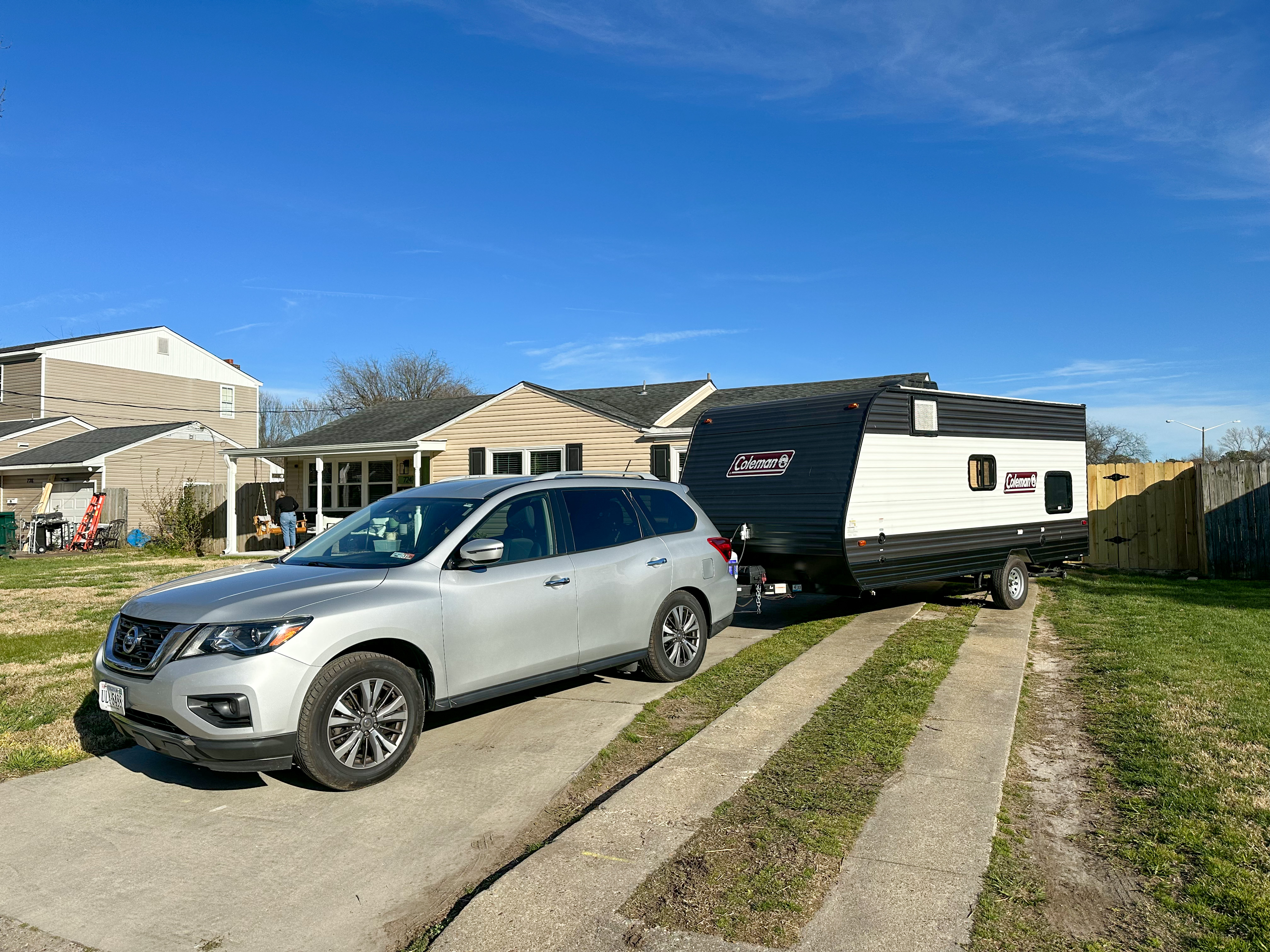
6. Which renovation projects are you planning to tackle in the future? Which ones are you most excited about?
We are currently in the process of replacing the shelf above the queen bed. The stock shelf isn’t quite deep enough to hold most standard-size baskets. Given the smaller size of our unit, we need to make sure that every storage space is functional and practical. My dad will actually be custom-building a shelf from poplar wood so that it’s much stronger and visually appealing, similar to that of the custom tabletop.
At the same time, we will also be applying wallpaper to the wall on which that shelf is mounted. This is the largest wall in the unit and it comes standard with a faux wood wallpaper. We’re excited to see how a brighter, more modern wallpaper will add to the aesthetic of the space.
7. Do you have any helpful advice for RV renovation beginners?
When it comes to achieving a cohesive aesthetic in the RV, start by picking one statement piece from which you can build everything else around. This could be wallpaper, bedding, etc. Find something that you love the look of, and then allow that to inspire the look over everything else around it.
My wife, Shaina, owns her own business, HartwoodDesign.co, in which she designs and creates custom laser cut and engraved decor. With our space, she was able to draw from the various patterns and themes and create custom pieces to accentuate the overall design.
Once you have your style solidified, it’s important to not let perfection get in the way of good. What I mean by that is don’t stress over the little imperfections that come along with your DIY projects. Tiny wrinkles in your wallpaper, a scratch on your backsplash, a run line in your paint; at the end of the day, these will be invisible and become part of the story behind your renovation.
8. What is your favorite part about renovating your RV?
Our favorite part of this renovation is the experience of customizing the unit and making it our own. Spending time together, figuring out how to overcome the obstacles, and being able to admire our work in the end is the most rewarding part so far. We’re excited to take the RV out this season and get to adventure in our custom unit and show it off to friends, family, and those we meet on the road.
9. Is there anything else I didn’t ask about that you think would be helpful for RV renovators to know?
If you’re renovating your RV, there’s a good chance that there are others like you out there doing very similar projects, or who have completed those same projects and are willing to share their tips, the tools they used, etc. We’ve been fortunate to find a good community of Coleman Lantern 17B owners who frequently share their projects in a Facebook group. We’re able to consult this group for any specific measurements, questions about the unit, tips, etc. This has been invaluable in our renovation process.
Lastly, I would say to anyone thinking about starting a renovation – your RV is your home on the road. Make it feel that way. Make it your own!
Are you ready to look for a used RV and get started on your own renovation projects? Check out our nationwide RV inventory on RVTrader.com.
